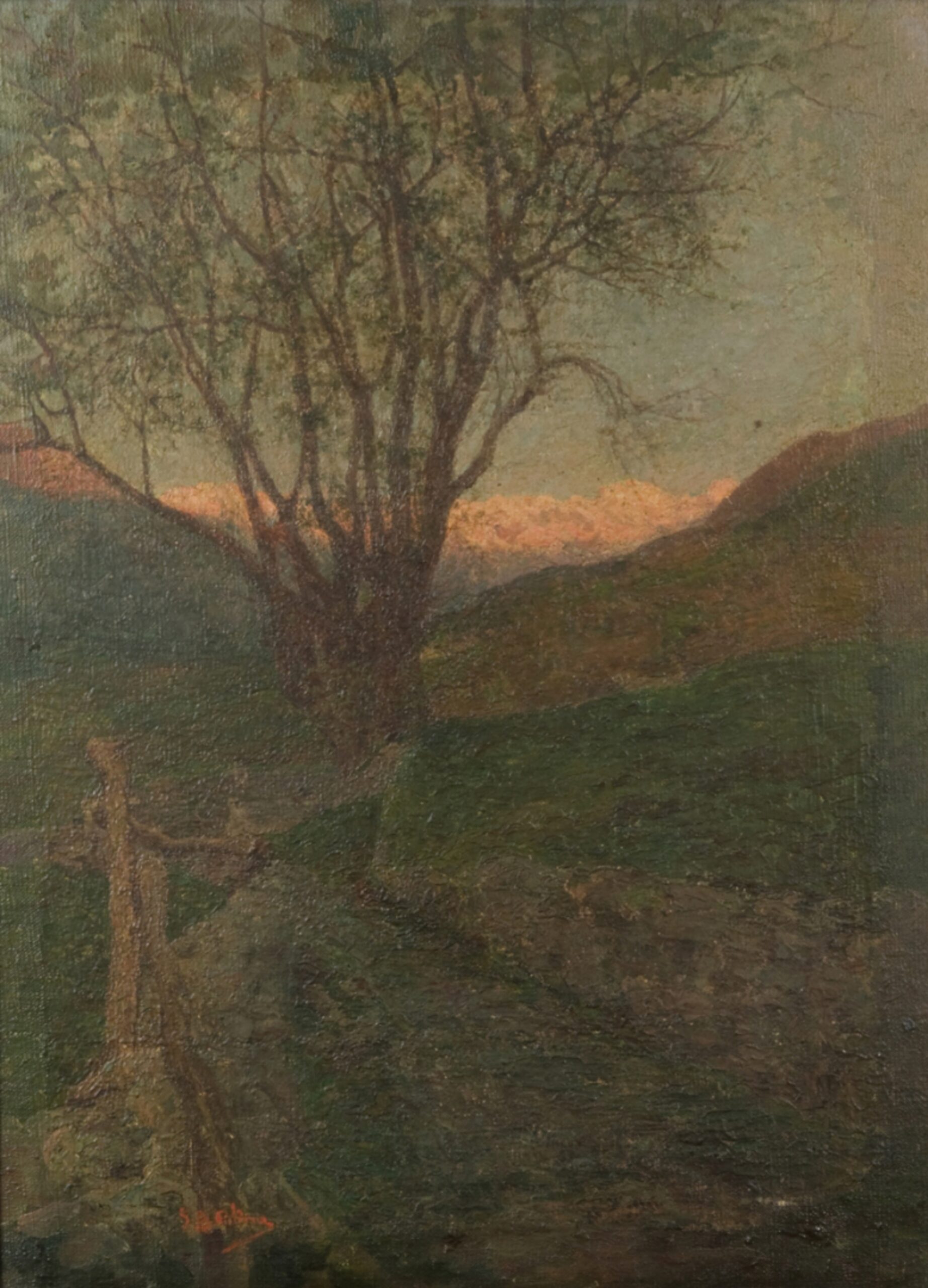It is a beautiful morning, a splendid morning. I took a little stroll in the gentle, fresh breeze of the church square, a true May day, joyful, comforting, and uplifting for the spirits. (…) In the morning, even feelings have a touch of freshness and clarity found in the morning surroundings, with its clear, bright skies, and its splendid greens washed by the dew. (…) It is only on clear days that one experiences pleasure in getting up long before the sun rises. It seems as if the night has laid a fragrant layer of fresh scents upon the green of the meadows, fields, and plants; the birds are more joyous, the air is clear, pure, enticing and invigorating. Just one look at the countryside refreshed by the dew, at the crystal-clear sky, a wave of that air that passes through you, that filters through your body, is enough to feel the body and spirit come alive again.
May 1897. Giovanni Battista Ciolina’s diaries. Transcribed by Paolo Ciolina


CRITICAL ANALYSIS
In the poetry of extreme light, which constitutes one of the most original themes in the works of Giovanni Battista Ciolina, Crepuscolo sul Monte Rosa dalla piazza di Toceno (Twilight on Mount Rosa from Toceno Square) represents an outcome of exquisite quality, undoubtedly for its extraordinary ability to fully capture the most fleeting moment of the entire day with all its evocativeness, but also for the technical solutions adopted.
The real subject, unchanged over a century, except for the growth of trees, is represented through a composition that redeems the ordinary static nature by means of a sharp diagonal cut of the wall and the ground, outlined with lbroad brushstrokes that appear almost overlooked. As was his habit, Giovanni Battista constructs the scene in layers: in the background, the mountains of the upper Bognanco Valley, followed by the slopes of the lower western Vigezzo Valley, the ridge of Pizzo Ragno on the left, then the dark elevation upon which Buttogno stands, the viewing point wall, and finally, the road in the foreground. So far, so good, except that the road and the wall are further divided into additional elements: the greenish triangle in the extreme foreground, cleverly engraved by the juxtaposed strokes of red and yellow. Then, for the road, there is a broad diagonal strip, predominantly pink with streaks of blue and green, and vertical brownish smudges. The wall is brown at first, then a greenish grey, followed by intense blue and bronze, and finally, on the surface, touched by the faint last light of twilight, rendered with a sequence of white and cyan brushstrokes. It is a symphony of cool tones, skilfully calibrated with subtle yellow strokes; a warm colour that prevails in the sky, streaked with pink, red, light blue and green, and stands out sharply against the dark foliage of the tree with only a few sparse leaves. The juxtaposition of dark or cool areas with warm, bright ones achieves a truly convincing result, but ultimately, it appears entirely unnatural: how is it possible that the portion of the road close to the low wall, which should be in shadow, appears so luminous? Why does the tree trunk not cast any shadow? Why is the triangle at the bottom right in darkness when it should receive light from the sky instead? And finally, how can the leaves, clearly visible at the top right, be so bright when they are opposite the light source? There is no denying that in this small masterpiece, Ciolina fully applies the principle “not to copy reality as it appears to our eyes” because what matters “is that the paintings achieve the right impression”. in the end.There is, therefore, something wonderful in this painting, both in the forced interplay of light and in the schematic shape of the tree. The tree trunk is defined with a livid colour, so diluted that it reveals the texture of the landscape beneath, applied almost with broad spatula strokes, where it stands as a symbolic presence. As it rises from the ground towards the dark, imposing canopy, the colour becomes denser, more textured. The same applies to its branches, constructed before the magical iridescent sky which, by contrast, becomes even more colourful and radiant, if possible.
A similar framing, and a comparable subject, is a tree standing out on the landscape in Alba in Valle Vigezzo; (Dawn in Vigezzo Valley), however the two works could not be more different. Not only because here it is the first light of day that is represented (a moment of the day that is not so frequent in Ciolina’s work) and not the twilight, but above all because of the painting technique employed. Indeed, the brushstrokes are small and restrained, similar to and more so than in Toceno al tramonto (Twilight in Toceno – tappa 4), which is not chronologically distant from this piece. However, compared to that piece, here the artist seems to dare much less with colour,maintaining a more conventional palette closely adhering to reality. The large chestnut tree is undoubtedly naturalistic in the articulation of its branches, the definition of its sparse canopy, laden with a patriarchal authority that bestows a peaceful serenity , upon the scene, far removed from the emotional tension of Crepuscolo. The astonishing aspect lies in Ciolina’s choice of colours, through which he manages to convey the condition of the first light of dawn when the tones are still muted, the colours are obscured by the mists of the night and they begin to free themselves from their greyish tinge. The minute painting style in this painting bears a relationship to the ‘divisionist’ works that could lead us to consider it to be an earlier piece than Crepuscolo.
Sign up to receive news on events, exhibitions and trainings from the Rossetti Valentini School of Fine Arts Foundation.
Iscriviti per ricevere le news su eventi, mostre, incontri di formazione organizzati dalla Fondazione Scuola di Belle Arti Rossetti Valentini.